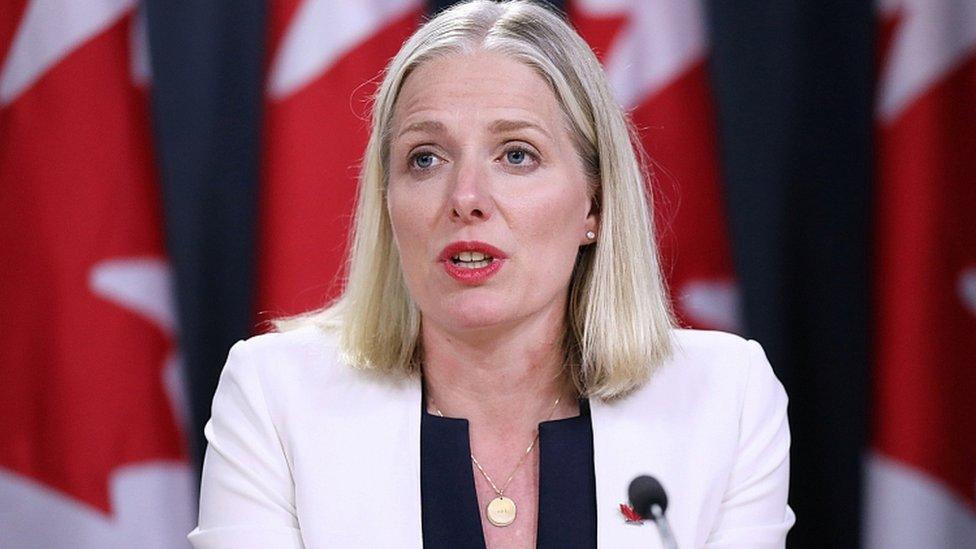Prime Minister Justin Trudeau unveils new cabinet
- Published

Prime Minister Justin Trudeau has unveiled an expanded 36-member cabinet
Prime Minister Justin Trudeau has unveiled his new cabinet with former Foreign Minister Chrystia Freeland now tasked with handling Canada's internal divisions.
His government faces the threat of a national unity crisis amid a growing sense of alienation in Alberta and Saskatchewan.
His Liberal Party retained power in October's election but lost 20 seats.
Mr Trudeau now has the challenge of governing with a minority.
Speaking after the swearing-in ceremony on Wednesday, the prime minister praised Ms Freeland's work on renegotiating the North American Free Trade Agreement with the US and Mexico.
The former journalist, 51, was moved to intergovernmental affairs, and will now act as the government's point person to deal with the provinces.
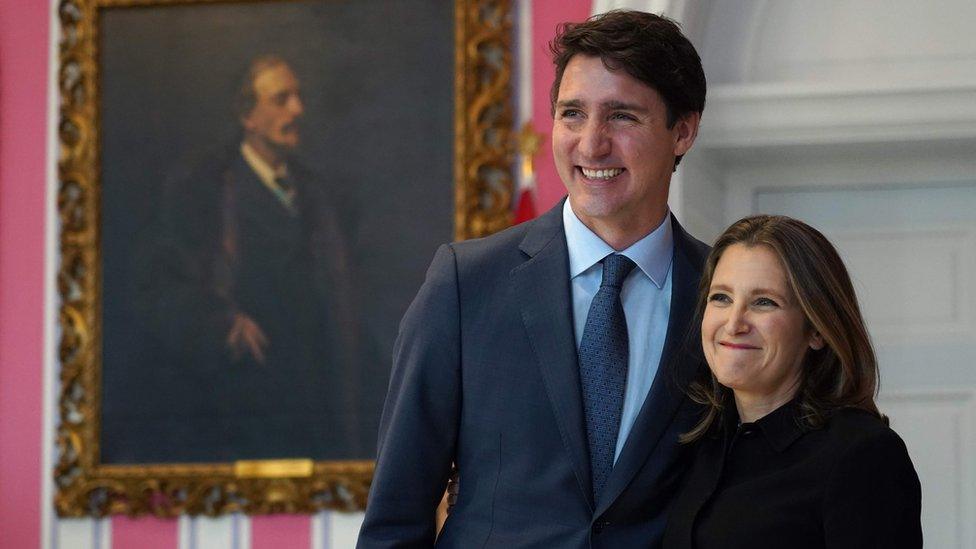
Chrystia Freeland (R) says the country must face its challenges as 'Team Canada'
She was also named deputy prime minister and will help shepherd the trade agreement through the ratification process, which is facing resistance in the US Congress.
Mr Trudeau said their efforts together on "very difficult negotiation with her American counterparts should enable us to deliver on issues like energy and environment in particular".
The Liberals were shut out of Canada's energy heartland, Alberta and Saskatchewan, where there is growing talk of separation.
There is a sense that the west's interests are not represented in the capital of Ottawa and frustration with the government's pipeline and environment policies.
Ms Freeland will work closely with former trade minister Jim Carr, who will serve as a special representative for Alberta, Saskatchewan and Manitoba to ensure the region has "a strong voice in Ottawa", the prime minister's office said.
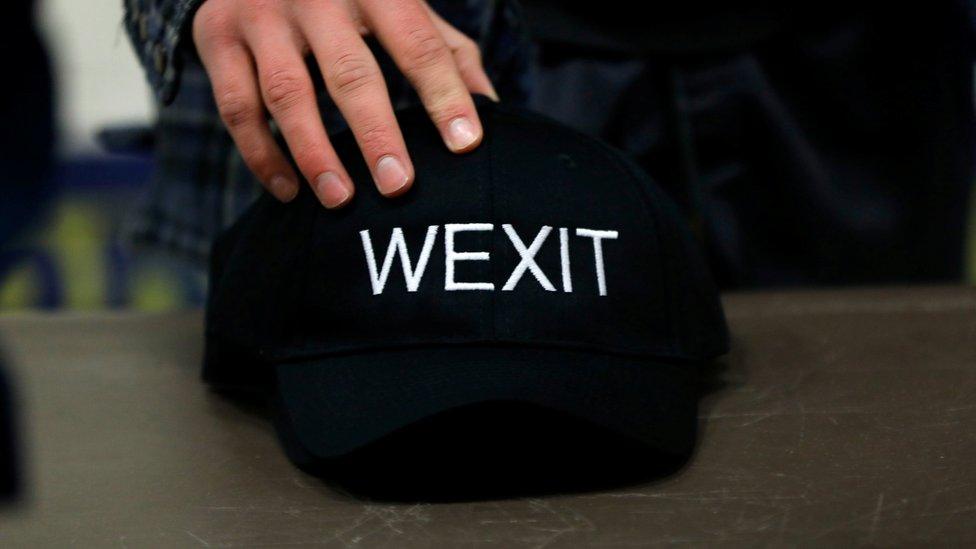
Alberta's separatist movement has been dubbed "Wexit" by supporters
Conservative leader Andrew Scheer called the expanded 36-member cabinet a "bloated version of the same one that helped create an affordability crisis for Canadian families, attacked our energy sector and put thousands of Canadians out of work, and set the stage for a national unity crisis".
What are some of the other big changes?
Francois-Philippe Champagne will replace Ms Freeland as Canada's top diplomat. He formerly held the international trade and infrastructure portfolios.
Catherine McKenna, one of Mr Trudeau's more prominent ministers after spending four years in the environmental portfolio, was moved to infrastructure. She is being replaced by former fisheries minister Jonathan Wilkinson.
MP Marc Miller is a new face in cabinet, taking over the indigenous services portfolio. The non-indigenous politician made headlines two years ago when he delivered a statement in the House of Commons in the Mohawk language, which he had spent a year trying to learn.
A number of ministers kept their portfolios, including Finance Minister Bill Morneau.

Some key moves and fresh faces:
Chrystia Freeland from foreign affairs to intergovernmental affairs
Catherine McKenna from environment to infrastructure
Francois-Philippe Champagne from infrastructure to foreign affairs
Jonathan Wilkinson from fisheries to environment
Ahmed Hussen from immigration to families and social development
Seamus O'Regan from indigenous services to natural resources
Bill Blair from border security to public safety
Mary Ng from small business to international trade
Marco Mendicino appointed to immigration
Steven Guilbeault appointed to heritage
- Published21 October 2019
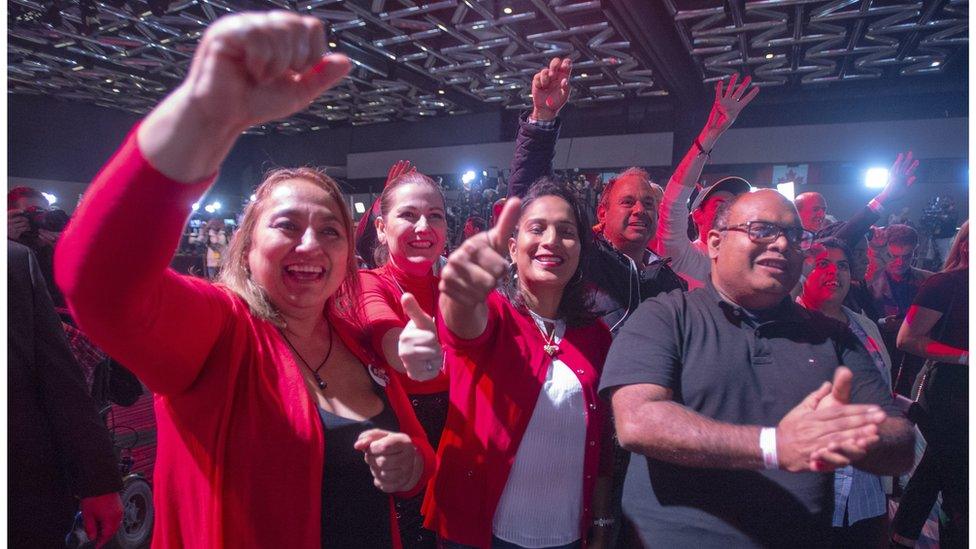
- Published22 October 2019
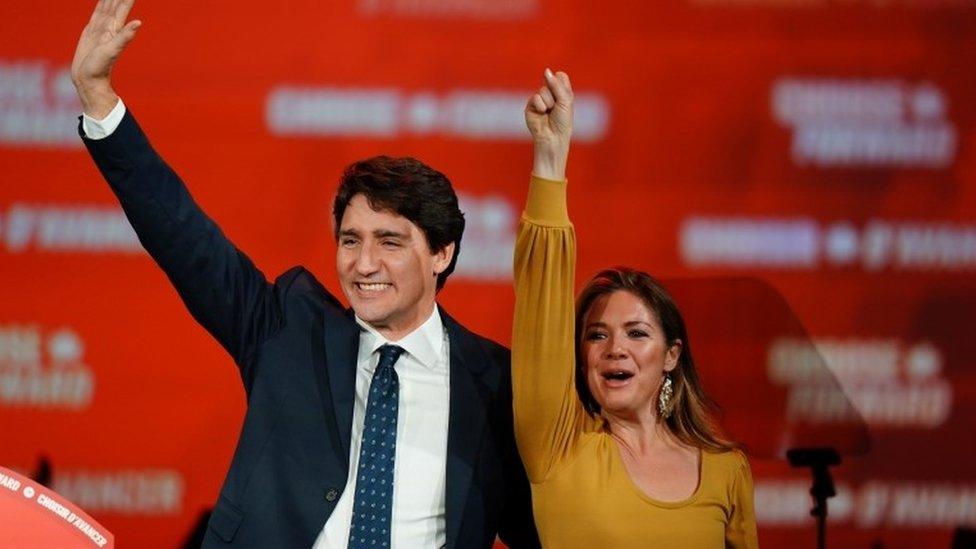
- Published8 September 2019
